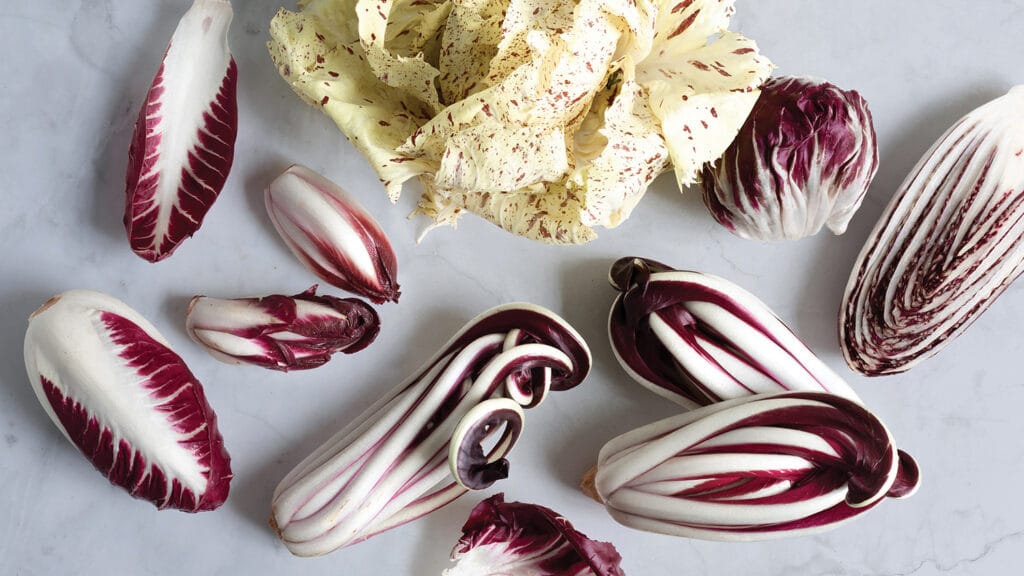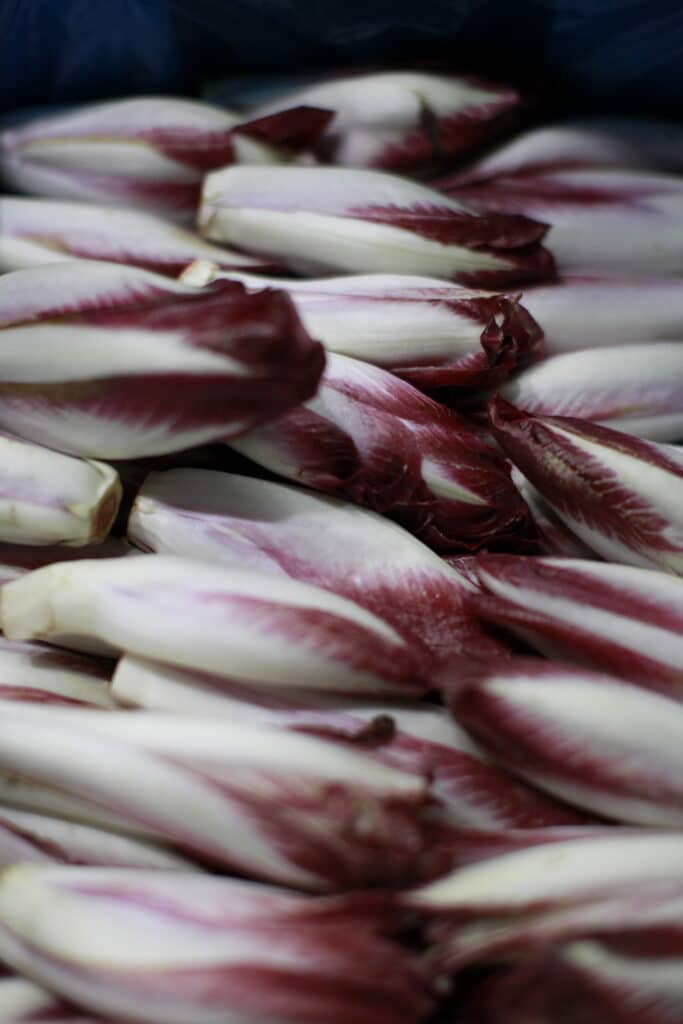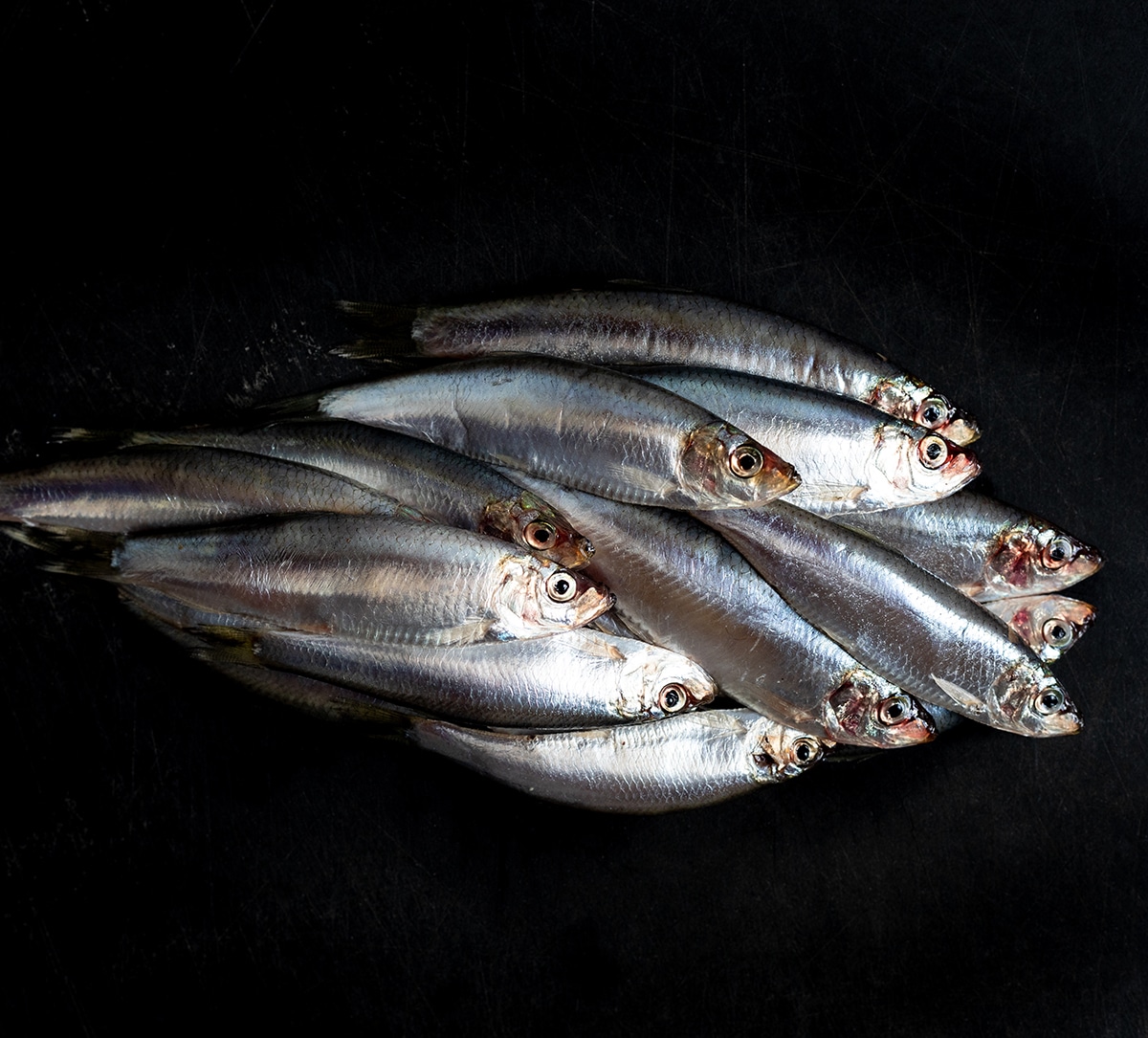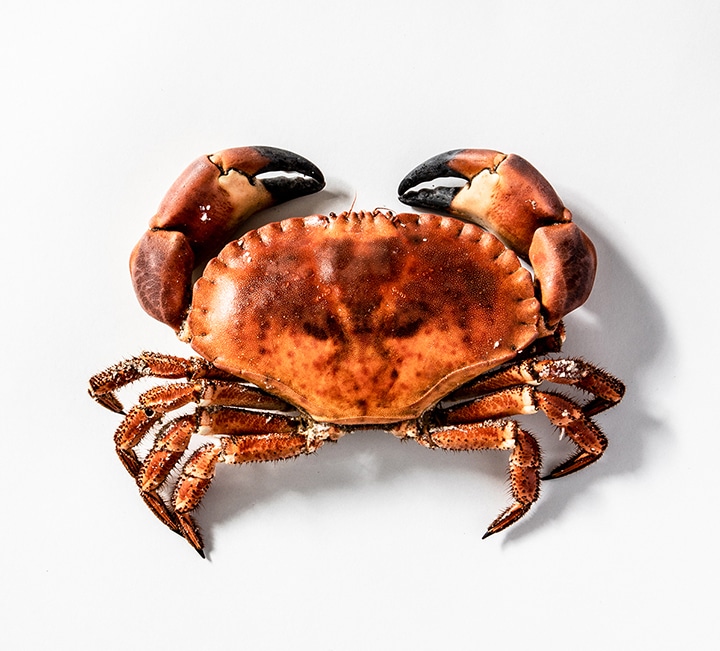The bitter end
Thom Eagle on how, in the austere weeks of late winter, he finds himself lacing salads, risottos and ragus with the bracing, bitter tang of radicchio


“I TURN TO DISHES THAT, RATHER THAN SWADDLING US FROM THE WIND OUTSIDE, INSTEAD REFLECT IT: FRESH AND CLEAR AND BITTER”
Image: Regula Ysewijn
It is an unavoidable fact of the British culinary winter that by the time the weather actually starts to howl and bite in January and February, most of our enthusiasm for rib-sticking stodge has come and gone. Even a warm, wet autumn makes me reach for the stock pot and the casserole, eager after summer’s salads and assemblies to really get down to the business of cooking, of starting every meal with a sizzle of onions in pork fat or beef fat, olive oil or butter.
By the time the last of the Christmas leftovers have sulked their way out of the fridge, the parsley sauce repurposed as sandwich spread, the brandy butter melted absentmindedly into coffee, even my considerable appetite for rich blandness is sated and I find myself turning back towards dishes that, rather than swaddling us from the wind outside, instead reflect it: fresh and clear and bitter.
I don’t remember when I first encountered a radicchio – I suppose it was in a supermarket bag of Italian mixed leaves or something similar – but I can’t imagine I particularly enjoyed it. The taste for bitterness, which is the defining feature of all radicchios – the standard round chioggia, feathering treviso, tendrilled tardivo, and dappled castelfranco – is supposed to be the last acquired in the development of the palate, as far as you can get from the raw love of sweetness and fat we learn literally at our mother’s breast. Bitterness, after all, is often in nature the taste of poison, and there is a reason a child’s first reaction to, say, an olive, is so often to spit it out. Hoppy beer, black coffee – these are tastes we acquire. Much of the cultivation, in fact, of wild greens into the spinaches and lettuces which now fill the aisles has been to breed out the bitterness. Be that as it may, and without wishing to make wild generalisations, it is also true that the Italian tolerance for bitterness is far greater than that usually found in this country.
Although supposedly medicinal and perhaps originally endured as such, the drinks known as amari – dark, herbal and astringent – are enjoyed all over Italy and like much of its cuisine, paraded with a stubborn local pride, from the sickly Averna of Sicily to the more serious concoctions of the north, chief among them Campari and Fernet-Branca. These last two, being best known in the UK, have perhaps contributed most to a growing appreciation for bitterness – alongside, of course, the radicchio.
While shredding finely and mixing with an array of other leaves is not a bad way to treat radicchio, offering a contrast of both flavour and colour in a mixed salad, it is more in keeping with their dignity to make their bitter redness the star of this particular show. Whatever variety you have, remove the core and pull the leaves apart roughly to maintain the shape. The dressing might offer a contrasting warmth, with the hum of raw garlic and just-toasted nuts, or the complementary coolness of buttermilk, but either way should be at least a little sweet.

Citrus, suitably wintery and suitably Italian, is always welcome with radicchio, whether filleted neatly into one of the above salads (perhaps alongside a good vinegar) or juiced or zested or cooked alongside it in some fashion – radicchios respond extremely well to cooking. You can make a quick pickle by blanching the thinner leaves of tardivo or treviso in a simple pickling liquor, made with some of that good vinegar, as much water, a spoon of sugar and a pinch of salt. Drop the leaves in for 30 seconds before fishing them out again. When they’re cool, chop them into some raw beef and season with pecorino or salted ricotta for a sort of tartare, or just eat them with cheese.
To my mind, one of the best vegetable risottos (risottos in general being mainly a showcase for good vegetables and good stock) is made with radicchio and red wine, seasoned with gorgonzola and walnuts as well as the usual butter and parmesan. In a similar vein, you can always make a radicchio ragu, which is something I thought I invented but it turns out, as is usually the case, I did not.
Having said all that about freshness and light, a radicchio ragu is definitely a dish to warm us a little against the cold. There is something austere in its bitterness that suits the later winter. Start, as all the best stories start, with a sofrito of onion, celery and carrot, chopped more or less finely and fried gently in fat – I would incline towards the sweetness of rendered pork fat as the cooking medium, which might mean that you in fact start with a few lardons of pancetta or bacon, placed in a cold pan so they release their fat as it heats up. If you are vegetarian or otherwise uninclined towards eating pork, then butter would be my next choice, and good olive oil, while not in any way undesirable, a distinct last.
While this is sweetly sweating, chop up a head or two of radicchio and proceed as you might if you were making a ragu of meat: browning and charring it in batches in a hot pan, adding each caramelised batch to the sofrito as you go, then finally deglazing your hot pan with red wine or sherry and orange juice to boil up and pour over the radicchio, stirring everything together. Cook for 10 minutes or so until soft. It probably won’t need any more liquid.
This isn’t a recipe, but rather a suggestion. A recipe, besides specifying the amount of vegetables to use, might have included a tablespoon of chopped thyme and a couple of sliced cloves of garlic, a pinch of chilli or maybe a little juniper, though the latter’s tendency to make everything taste like cheap gin means it is not something I cook with often. A recipe, moreover, might be something you cook once and never think of again, whereas I would like this suggestion to encourage you to eat the bitter leaves of our late winter, purple or white or spotted or green, to cook the ones you usually eat raw and to shave and massage the ones you usually cook, dressing them richly and heavily in your largest salad bowl.
Raw, their icy bitterness speaks to the late winter’s need for lightness and lift; cooked, especially with orange, sherry and thyme, the bulk of the vegetable collapsed and concentrated into the kind of ragu that acts more as a dressing for carbohydrates than as a dish in its own right, they can be stirred into buttered noodles or dolloped onto creamy polenta – to be eaten with a spoon while we wait for the spring.


